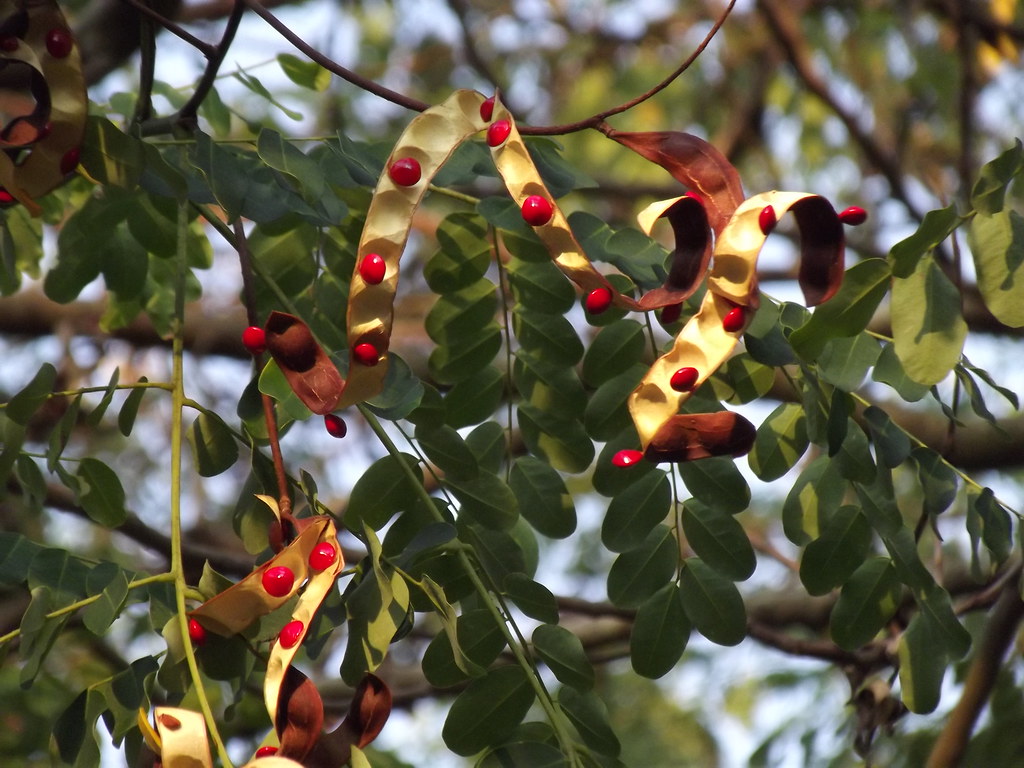Adenanthera pavonina L.
A large deciduous tree, bark pale pinkish grey. Leaves bipinnate, up to 24 cm long, rachis c. 10-40 cm long, petiole c. 5-10 cm long, pinnae opposite, 2-6 pairs, c. 7-12 cm long, leaflets 7-15 pairs, sessile, alternate, obovate, l.5-4.0 cm long, 5-25 mm broad, margins slightly curved backwards, base unequal. Inflorescence axillary and terminal raceme, c. 7.5-15 cm long. Flower pedicellate, pedicel 3.5-4.0 cm long. Calyx 5, gamosepalous, 5 toothed, c. 1 mm long. Corolla pale yellow, c. 2.5-3 mm long, petals united at the base. Stamens 10, free, hardly exserted, anthers with a gland at the tip. Fruit a pod, curved, becomes coiled after dehiscence, 10-22.5 cm long, c.7-10 mm broad. Seeds many, bright red in colour, like beads, c. 7-8 mm wide.
- Family: Fabaceae
- Habit: Tree
- Habitat: Open areas, roadsides, often cultivated, forest edges
- Status : Common
Vernacular names
English - Red Sandalwood, Coral wood, Peacock flower fence, Red beadtree
Malayalam - Mancati, Manchadi, Sem
Tamil - Manjati, Tilam, Ani kundamani
Telugu - Bandiguruvenda, Peddaguruginja, Gurivenda, Enugaguruginji
Hindi - Badi Gumchi, Kuchandana, Raktchandan, Ranjana, Ratangunja
Sanskrit - Raktachandana, Tamraka, Tilakah
Kannada - Manjadi, Munjuti, Ane Golaganji
Oriya - Sokakainjo
Other - Acacia Coral, Barbados Pride, Coral Bean Tree, False Wiliwili, Saga Seed Tree
Medicinal Uses
In India a decoction of its young leaves is used against rheumatism and gout. It is also used for inflammations, blood disorders, arthritis, cholera, paralysis, epilepsy, convulsion, spasm and indigestion. Pulverized wood mixed with water is taken orally for migraines and headaches. Bark and leaf decoction are used to treat dysentery, diarrhoea and tonsillitis. Decoction of the seeds were used in pulmonary infection and externally applied in chronic opthalmia.
